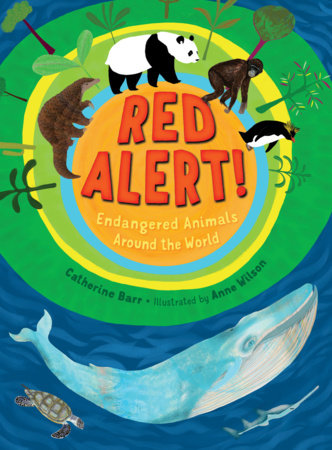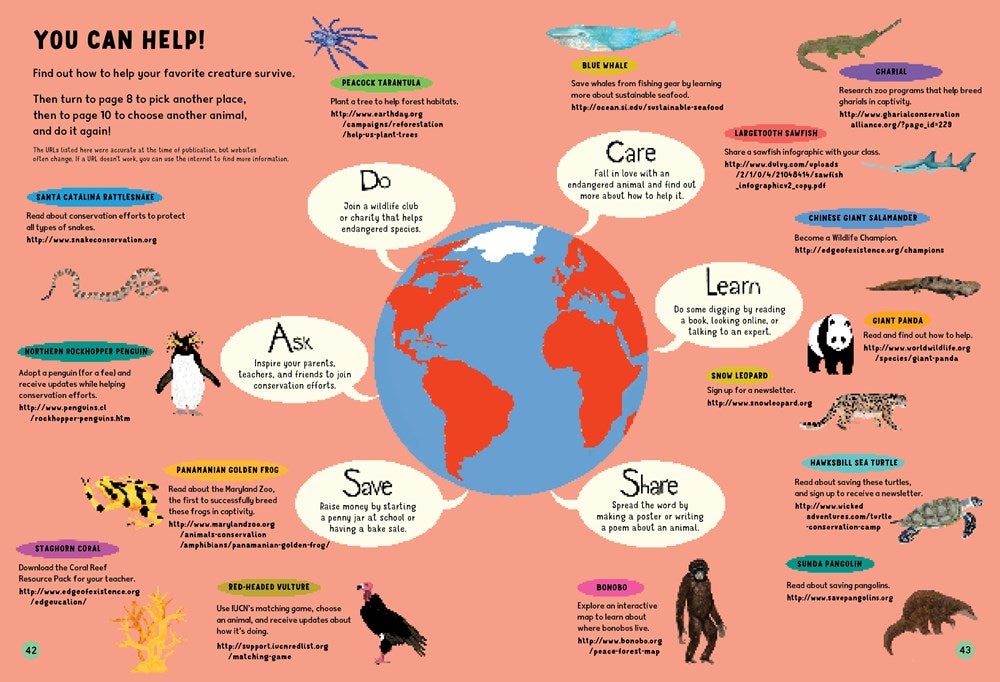Around the world scientists are collecting stories, facts, and figures that help us understand and care for life on Earth. Some of these scientists work together to maintain a list of endangered animals, plants, and fungi. It is known as the Red List.
It is red—the color that indicates an emergency—because many of the 80,000 species investigated so far are in danger of disappearing. The information gathered for the Red List is used to help save endangered species.
The Red List team evaluates each animal on the list and assigns it a category. You’ll see some of these mentioned in this book.
Extinct
Extinct in the Wild
Critically Endangered
Endangered
Vulnerable
Near Threatened
Least Concern
So let’s get started. . . .
Pick a place, then
choose a favorite creature,
discover its story,
and find out how to help save it.
Copyright © 2018 by Catherine Barr (Author); Anne Wilson (Illustrator). All rights reserved. No part of this excerpt may be reproduced or reprinted without permission in writing from the publisher.








